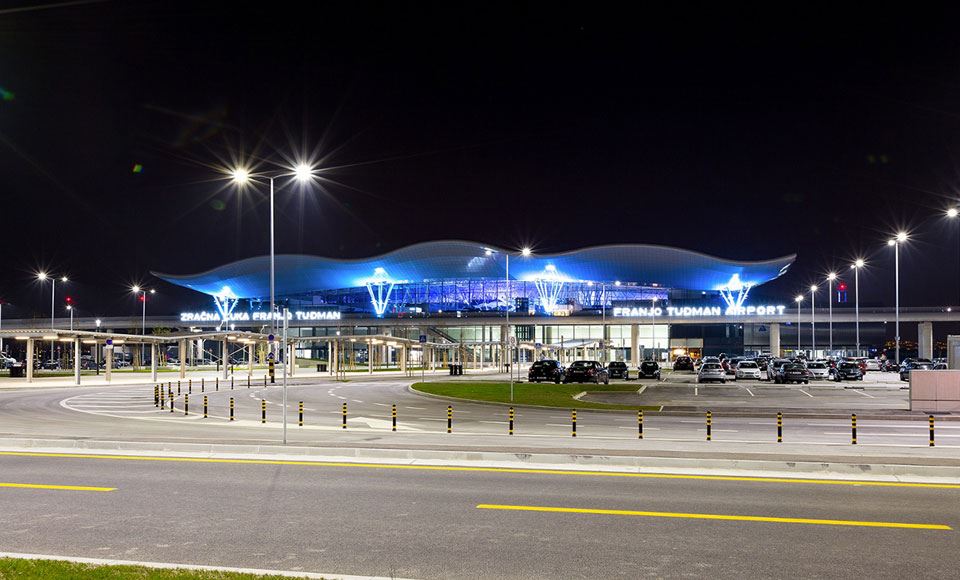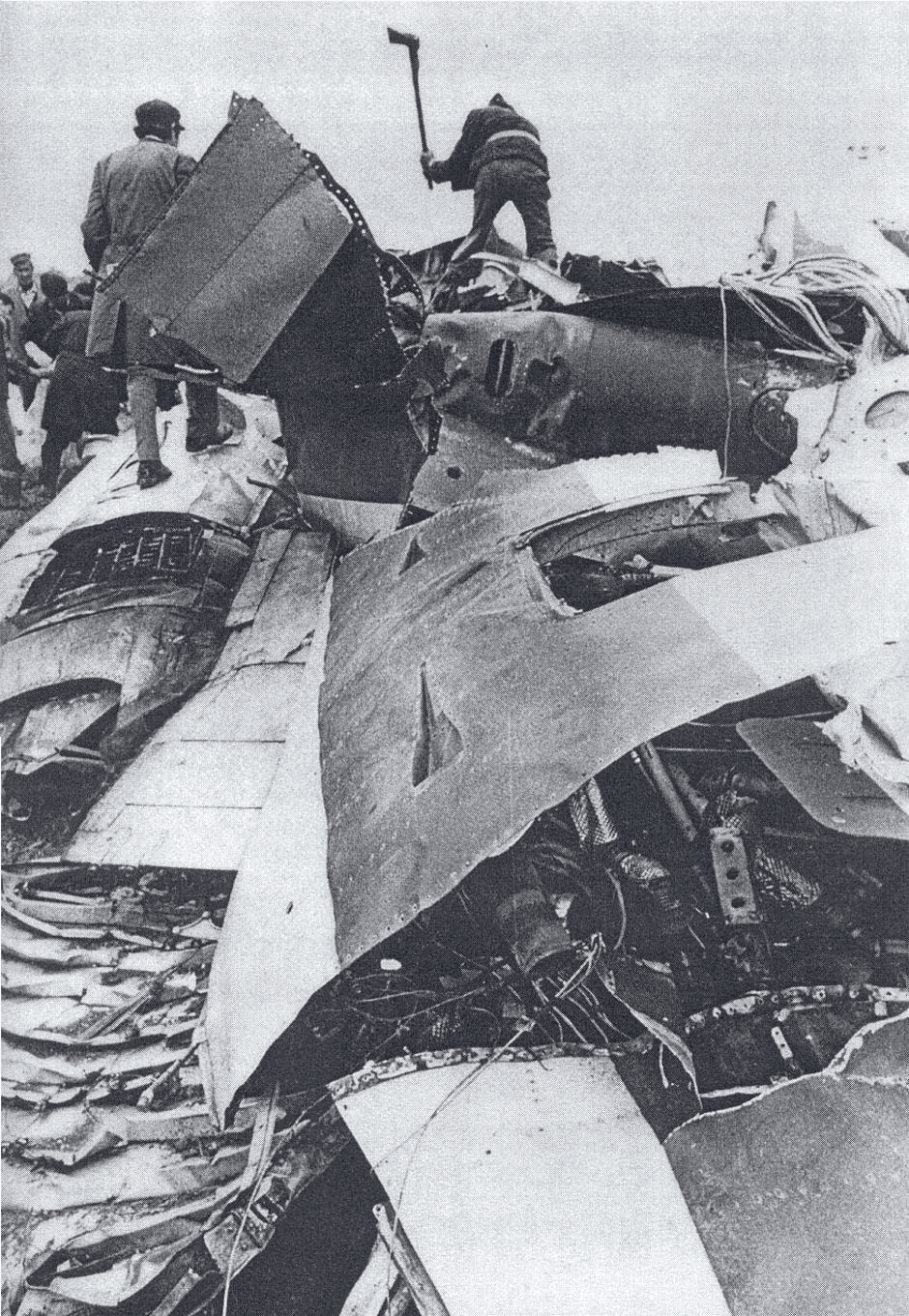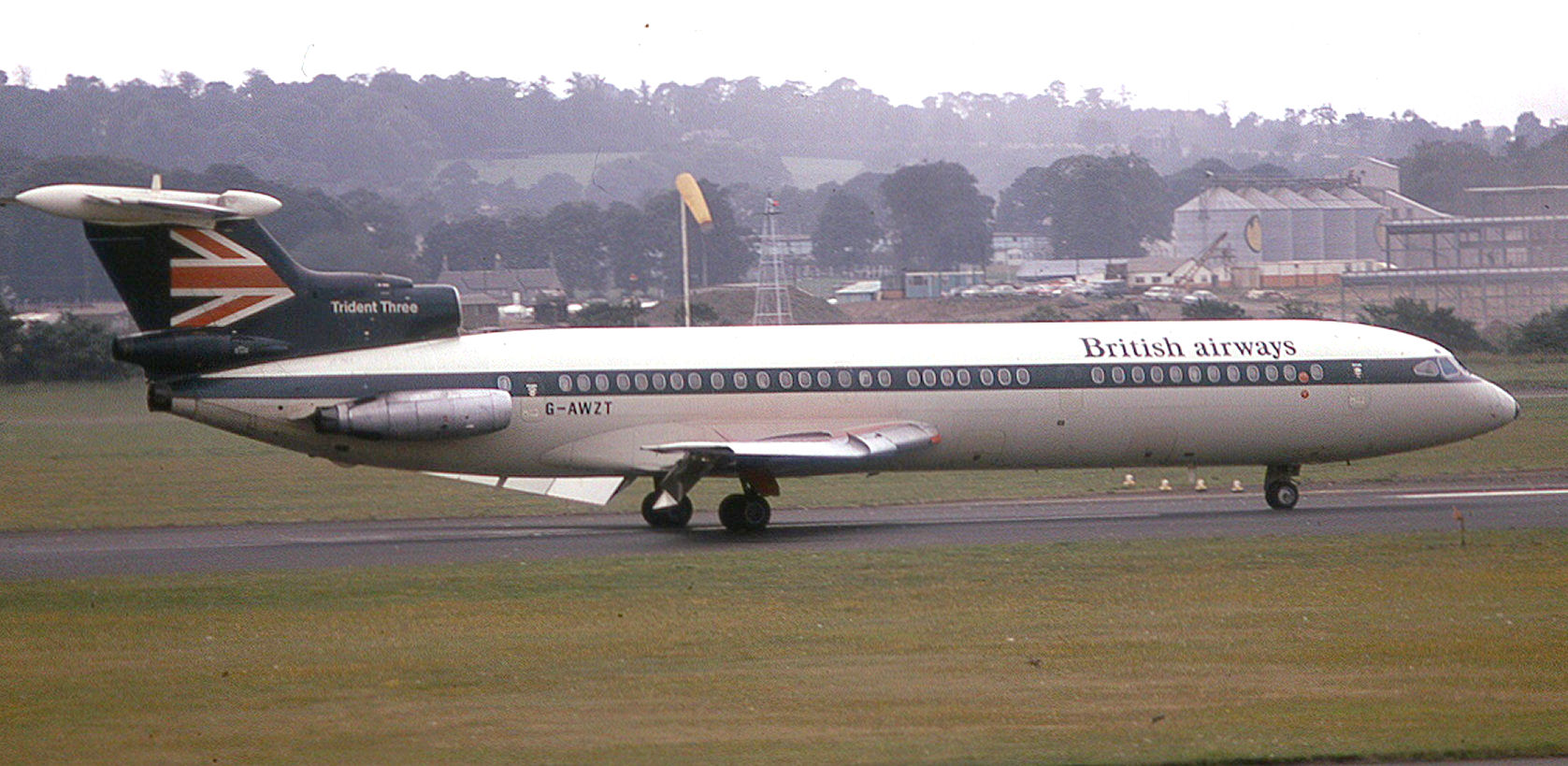Croatian Air Traffic Among the Closest to Pre-COVID Levels in Europe
October 14, 2022 - Passenger air traffic in Europe's airport network rose by 51% in August compared to the same month in 2021 but was still down 12% from the record in 2019, according to a newly released analysis by the International Airports Association (ACI).
As Poslovni writes, in general, the recovery of the aviation market is visible because the differences compared to 2019 are decreasing month by month - in July 2022, the decrease was 14.4%, while in June, this was 17.3%. Tourist countries, such as Croatia, are recording the most remarkable recovery and have the slightest difference compared to the pre-coronavirus situation.
According to ACI Europe, the EU+1 market, which consists of the EU countries and the United Kingdom, is leading the recovery with an increase in passenger traffic at airports by 64% in August compared to the same month last year.
The best results were achieved by airports in the United Kingdom (+178%), Finland (+175%), and Ireland (+147%). Compared to pre-pandemic levels, airports in Greece (+4.5%), Luxembourg (+6.4%), and Iceland (+0.2%) achieved complete recovery in passenger traffic in August.
Meanwhile, airports in other major tourist markets, including Portugal (-5.8%), Spain (-7.4%), Italy (-8.5%), and Croatia (-8.6%), are closest to a full recovery. In contrast, airports in Slovenia (-40.1%), Finland (-37.7%), Latvia (-31.1%), the Czech Republic (-30.5%), and Bulgaria (-29.3%) came significantly short, which is largely a reflection of the impact of the war in Ukraine and related sanctions against Russia and Belarus. Among the larger markets, the results of airports in France (-13.5%) and Germany (-14.2%) were similar, while those in the UK (-19%) still lag behind.
In airports in the rest of Europe, passenger traffic increased by only 7% compared to the same month last year, which was a decrease of 16% compared to 2019. However, airports in Albania (+60.3%), Bosnia and Herzegovina (+ 31.2%), Kosovo (+22.7%), and Armenia (+21.4%) far exceeded their 2019 figures.
Russia's figures also grew by 5.7%. At the other end of the spectrum, airports in Belarus (-60.6%) and Moldova (-20.4%) recorded a steep decline. Istanbul was Europe's busiest airport, receiving 6.8 million passengers during August, and it is the only major European hub whose passenger numbers exceeded the pre-pandemic levels by 1%.
Istanbul itself grew by almost 50% compared to last year. London-Heathrow is second with 6.04 million passengers, followed by Paris-CDG with 6.02 million passengers. Amsterdam recorded 5.33 million and Frankfurt 5.19 million passengers in August.
"The statistics from August show how polarised the situation is becoming for European airports as they are dominated by externalities. On the one hand, the public appetite for travel is undiminished – as the wave of holidays shows. On the other hand, there is the reality of war. It seems that a simple geographical fact will affect the stability of our members for some time," said Olivier Jankovec, general director of ACI EUROPE based in Brussels, while the global ACI, which manages 2,000 world airports, is headquartered in Montreal, Canada.
According to data from the Central Bureau of Statistics, in August 2022, the total passenger traffic at Croatian airports amounted to 1.77 million, which is 41.8% more than in August 2021. Compared to August 2019, that was a decrease of 9.2%.
The total passenger traffic from January to August 2022 was 6.9 million, i.e., 83.7% of the traffic from the same period in 2019. In August, Split Airport had the highest passenger traffic, with 623 thousand passengers, followed by Dubrovnik with 428 thousand passengers, and Zagreb with 346 thousand passengers.
For more, make sure to check out our dedicated Lifestyle section.
Union Announces Strike of Croatian Flight Controllers Over Burnout Issues
ZAGREB, 19 July 2022 - The HSSKL trade union of Croatian flight controllers on Tuesday said that its members will go on strike at 0700 hrs Thursday over burnout and exhaustion issues.
On the first day of their industrial action, the number of planes flying over Croatia will be reduced to 40% of the total prescribed capacity, and the traffic at airports will not be affected until Saturday.
However, on 23 July the union threatens to reduce the capacity of the total planned planes at all the Croatian airports, except in Osijek, by 50%.
The HSSKL union today expressed hope that the unionists will reach an agreement with the management of Croatia Control in charge of the air traffic management in addressing the issues of burnout and exhaustion of flight controllers.
The negotiations on this matter started on 24 March according to the union that demands changes in the organization of shifts for flight controllers and has warned of the shortage of professionals in this sector.
For more, check out our politics section.
Croatian Airports Record Large Increases in Passenger Numbers in January
ZAGREB, 12 March 2022 - Croatian airports served 170,000 passengers in January 2022, which is an increase of 246% compared with January 2021, according to data from the National Bureau of Statistics.
However, the number of passengers recorded in January 2022 was only 66% of the number for pre-pandemic January 2020.
Zagreb Airport served the largest number of passengers (139,200, +272%), followed by the airports at Split (19,600, +164%) and Dubrovnik (9,200, +150%).
The airports at Pula, Osijek, Zadar, Rijeka, Brač and Lošinj recorded considerably fewer passengers, below 1,000 each, but the Pula, Osijek and Zadar airports reported large increases in passenger numbers, of 258%, 200% and as much as 742% respectively.
The airports at Rijeka, Brač and Lošinj, which are largely seasonal airports, recorded fewer passengers than in January 2021.
The largest number of passengers came from Germany (35,300, +242.3%), the Netherlands (13,300, +163.7%) and the Russian Federation (10,700, no comparison with January 2021 was given).
The airports had nearly 4,000 flight operations (+82%) and handled 679 tonnes of cargo (+22%).
Make sure to check out our dedicated travel section.
Airport Passenger Numbers Increase Again in November 2021
ZAGREB, 13 Jan 2022 - In November 2021, 204,000 passengers passed through Croatian airports, which is 270.6% more than in November 2020, and the number of flights increased by 55% to 4,354, according to the data provided by the State Bureau of Statistics (DZS).
This is a decrease of 42% compared to the pre-pandemic November 2019, when 351,000 passengers transited through Croatian airports. November 2021 generated 58.2% of the passenger traffic in November 2019.
In terms of passenger traffic, Zagreb Airport ranked first, with 162,000 passengers, 286.6% more than in November 2020. It is followed by Split Airport with 26,000 passengers or 225.9% more while Dubrovnik Airport saw 13,000 passengers or 206.2% more than in November 2020.
The most significant international passenger traffic was to airports in Germany, with 51,000 passengers or 304.3% more than in November 2020, when 13,000 passengers were recorded.
DZS data show that in the first eleven months of 2021, 4.5 million passengers transited through all Croatian airports, an increase of 116.9% from the first eleven months of 2020. In that period there were 56.3% more flights or a total of 80,894. Cargo transport through Croatian airports increased by 13.7% to 7,959 tonnes.
Compared to November 2020, cargo transport increased by 28.3% to 829 tonnes.
For more, make sure to check out our dedicated travel section.
Experts Don't Expect Air Transport in Croatia to Intensify Before June
ZAGREB, 5 March, 2021 - There will not be any significant recovery in air traffic in March and April in Croatia despite the summer timetable which beings in those two months, it was said on Friday during an online webinar organised by the BSEA agency and several experts in the air industry in Croatia.
Passenger traffic by air might intensify late May or early June depending on the course of the pandemic, extent of inoculation, and travel restrictions by individual countries, said participants in the Aviation Arena webinar on prospects and challenges in the air industry in 2021.
Participants underlined that the early optimism in that industry for this year has deflated with the spike in cases of new variants of COVID-19 and a slow process of inoculation in Croatia and Europe.
They agreed that 2020 was the hardest year ever in the history of the air industry and that a lot of time will be required for its recovery and the question is whether it will ever achieve record numbers like those recorded in 2019. With the first cancellations of announced flights in Europe for March and April the agony is just being prolonged.
Difficulty to forecast recovery
The prospects do not appear at all promising and optimism is declining and no one dares forecast anything for the industry in light of the pandemic. There is a problem with flexibility and how to quickly adapt flights and personnel once traffic is restored, as well as the permanent costs and liquidity of companies, Tomislav Mihetec from the Croatian air traffic control said.
He said that Eurocontrol has three scenarios for recovery in the sector in relation to faster inoculation in 2021.
The first scenario takes into consideration that the level of air traffic recorded in 2019 could be achieved in 2024. However, that is already unlikely due to a slow pace of giving COVID jabs to population.
The second scenario foresees that if a greater portion of people are immunised against the covid infection in 2022, recovery could be achieved in 2025 or 2026. If the situation with vaccines does not improve in 2022, then recovery cannot be expected before 2030.
Croatia has similar forecasts, said Mihetec, adding that June and July seem to be the most optimistic and that 1,200 flights a day could be expected whereas in 2019 that number was around 2,700 and in August 1,800 flights can be expected compared to 3,200 in 2019.
Mihetec said that there were 760 million fewer passengers in 2020 compared to 2019 and that in 2020 the industry lost almost USD eight billion in Europe alone.
"Croatia had only 42% of flights in 2020 on the year or 300,000 flights which took it back to 15 years ago and the level of 2004 and 2005 and one example of the poor season can be seen that in the peak summer day when there were 1,900 flights whereas in 2019 on that day there were more than 3,500 flights," he said.
Less Than 2.2 million Passengers at Croatian Airports in 2020
January 11, 2021 – Unlike the record 2019, when more than 11.4 million passengers passed through Croatian airports, in the crisis 2020, that number dropped by as much as 81 percent, counting less than 2.2 million passengers.
At the beginning of each new year, the revenues from the last tourist year are added up, and tourists' numbers are concluded. However, it was inevitable that in 2020, during which world tourism experienced a massive decline due to the coronavirus pandemic, would also affect tourist numbers.
As reported earlier, the Croatian tourism sector saw 50 percent fewer tourist overnight stays in 2020 than the record 2019. Likewise, commercial aviation experienced its largest decline in history. In 2020, Croatian airports accepted and dispatched less than 2.2 million passengers, writes Croatian Aviation.
Traffic to Croatia's three largest airports, Zagreb, Split, and Dubrovnik, has been growing steadily for years, but this series has been interrupted by a global pandemic. The three mentioned airports had over 9.6 million passengers in 2019, while in 2020, they recorded less than 2 million passengers together (1,929,336). The fact that the other five Croatian airports had 242,827 passengers last year is also devastating, of which Zadar alone served over 120,000 passengers.

Source: Franjo Tuđman Zagreb Airport
With 924,823 passengers throughout the year, the main Croatian airport Franjo Tuđman Zagreb failed to reach the millionth passenger in 2020. However, almost half of the total Croatian traffic in 2020 was realized at the Zagreb airport.
Although it recorded an increase in the number of passengers in January and February compared to the same period in 2019, Franjo Tuđman Airport recorded a decrease in the number of passengers of 73 percent compared to 2019.
Unlike Zagreb Airport, Split Airport in January and February has modest traffic compared to the summer, seasonal months, and so it was in 2020. However, after the global pandemic hit Croatia, air traffic in Split almost stopped.
However, compared to other Croatian airports on the coast, Split still had a certain number of passengers in the peak season, especially in August. Still, the numbers in the post-season dropped drastically again. With 674,366 passengers, Split Airport recorded a decrease in the number of passengers of 79.58 percent compared to 2019.
Dubrovnik Airport was one of the biggest losers last year. It was closed in April, while the traffic was very poor in May and June. An increase in the number of passengers was recorded only in July and August, but not enough to avoid a large drop in the number of passengers.
Although many companies flew to Dubrovnik this summer, the planes were empty rather than full, as confirmed by statistics. The decrease in the number of passengers at Dubrovnik Airport is 88.6 percent compared to 2019.

Source: Zadar Airport
Traffic also dropped drastically at Zadar Airport, but not as much as in Pula. These two Croatian airports have been competing in the number of passengers for several years, and the difference between them is relatively small. Nevertheless, in 2020, Zadar accepted almost 40,000 more passengers than Pula. Zadar Airport recorded a drop in the number of passengers of 84.93 percent compared to 2019, and Pula Airport 89.6 percent.
In 2019, Rijeka Airport finally exceeded 200,000 passengers for the first time in its history. Still, the numbers dropped drastically in 2020 as many airlines have given up on introducing seasonal routes to this airport due to the global pandemic. Rijeka Airport thus recorded a decrease in the number of passengers of 86.22 percent compared to 2019.
In 2020, Osijek Airport had only domestic PSO (Public Service Obligation) lines and the Eurowings line to Stuttgart, but only in August. It recorded a decrease in the number of passengers of 85.72 percent compared to the previous 2019.
Brač Airport also recorded a decline in the number of passengers in 2020. A slightly more significant number of passengers was recorded only in July and August, but these are also modest numbers compared to the 2019 summer season.
You can see the graphs of the 2020 traffic from all Croatian airports at Croatian Aviation.
For the latest travel info, bookmark our main travel info article, which is updated daily.
Read the Croatian Travel Update in your language - now available in 24 languages.
Zadar Airport Gets Airport Health Accreditation
ZAGREB, Dec 19, 2020 - Zadar Airport has been accredited in the Airport Council International (ACI) Airport Health Accreditation programme which has been designed to help reassure the public that airport facilities remain safe and that precautions are being taken to reduce any risk to their health.
The accreditation is valid for the next 12 months.
After a long evaluation, it has been established that Zadar Airport operates in line with ACI and International Civil Aviation Organization guidelines and international industry standards.
"We are confident that our efforts will help us succeed in achieving this common goal and that is safe travelling," the airport said in a press release on Saturday.
Anniversary of Croatia's Worst Airplane Crash over Vrbovec in 1976
Thursday, 10 September 2020 – On this day in 1976, the explosion above Vrbovec was not just Croatia's worst airplane crash, it was the deadliest mid-air collision the world had ever seen
That summer there had been a heatwave. Although European holidays were not as standard as they are now, some of the 54 passengers on board the British Airways Hawker Siddeley Trident from London were no doubt looking forward to extending their good summer on this trip south to Istanbul. For the passengers of the other plane, 108 mostly-German tourists en route from Split to Bonn Cologne on a Douglas DC-9, this was the end of their vacation. They were headed home after rest on the Dalmatian coast. But, neither set of passengers would that day reach their destination.
The explosion above Vrbovec, just north-east of Zagreb on Thursday 10 September 1976 was not just Croatia's worst airplane crash, at the time it was the deadliest mid-air collision the world had ever seen. All 176 people aboard both aircraft were killed.
English language news footage taken in the aftermath of Croatia's worst airplane crash
The fault of the collision was a severely overworked, ill-equipped and understaffed Zagreb air traffic control. The ineffectiveness of their procedures that day had harrowing consequences.
In 1976, Vrbovec was known for its industry, its surroundings rich in agriculture. At the time of the crash – around 11.15am in Croatia - those working in the fields would have been thinking about coming inside to escape the glare of the sun and take lunch. The skies above them exploded before they could take that journey. Debris rained down over an area of 10 square kilometres.
Plane wreckage, photographed by the Croatian media shortly after Croatia's worst airplane crash
Over 1000 locals were engaged in the fruitless search for the victims. All were dead. Small comfort could later be taken from learning that most had died instantly, at the moment the planes depressurized. The last five metres of the DC-9's left wing had cut through the Trident's cockpit and the front of the passenger compartment.
The British Airways plane involved in Croatia's worst airplane crash © Mike McBey
Vrbovec was soon the destination for hundreds of journalists from around the world, not least Britain and Germany. News of Croatia's worst airplane crash had been reported within an hour of the incident. German families waited nervously at Bonn Cologne airport for relatives who would never come. The story had reached Germany. Their plane had not arrived. It took airport authorities another four hours to confirm that, sadly, it never would.
Near the town of Vrbovac today, in a countryside that remains very similar to that searched for survivors 44 years ago, a lasting memorial stands surrounded by trees, a permanent reminder of Croatia's worst airplane crash.
A memorial to some of the victims, at Zagreb's Mirogoj © SpeedyGonsales
For the latest travel info, bookmark our main travel info article, which is updated daily.
Read the Croatian Travel Update in your language - now available in 24 languages
Number of Airport Passengers in June Down 94.7%
ZAGREB, Aug 14, 2020 - Croatian airports in June this year handled 83,045 passengers, a 94.7% drop from the same period of 2019, and the number of passengers saw a double-digit drop in the first six months of the year as well, statistics from the national statistical office (DZS) indicate.
The drop in the number of passengers at Croatian airports is a direct result of the situation caused by the coronavirus disease, the DZS says.
Zagreb Airport saw the largest number of passengers, 43,000, which is a drop of 87% compared to June 2019, when it handled 333,000 passengers. It is followed by Split Airport, which saw 25,000 passengers, a drop of 95.1% compared to June 2019, when it handled 510,000 passengers, and Dubrovnik Airport with 10,000 passengers, 97.6% down from 414,000 passengers in June 2019.
Zadar Airport handled only 1,858 passengers, 98.5% down from June 2019, Rijeka Airport saw 1,483 passengers, a decrease of 95.1%, while Pula Airport saw only 976 passengers, an annual drop of 99.3%.
Of foreign passengers, the most numerous ones in June this year were Germans, accounting for 27,705 arrivals or 91.1% down compared to June 2019. They were followed by the Dutch, who accounted for 6,503 arrivals, a drop of 87.8%, and the Swiss, who accounted for 5,311 arrivals, a drop of 86.6%. There were only 1,770 tourists from Great Britain, which is a 99.4% drop compared to June 2019.
Croatian airports also saw a drop in cargo handled, with 432 tonnes, a drop of 57.1% compared to June 2019, when they handled 1,006 tonnes of cargo.
In the first six months of this year, 749,000 passengers passed through Croatian airports, which is an 82.5% drop from the same period of last year; the cargo handled was down by 31.6% to 3,782 tonnes, while the number of flights was down 67.4% to 17,474.
Croatian Airports See 29% More Cargo in 2018 Than 2017
An increase for Croatian airports up and down the country in terms of both passengers and cargo.
As Poslovni Dnevnik writes on the 26th of December, 2018, during the first ten months of 2018, nearly 9.9 million passengers and 10.257 tons of goods were transported to nine Croatian airports.
Croatian airports have been passed through by a massive 9.9 million passengers, which is equal to a significant 10.5 percent increase when compared to the numbers recorded during the same period last year, and in October 2018 alone, a huge 905,000 passengers were recorded, which is 11.7 percent more than in October 2017, according to data from the Central Bureau of Statistics statistics (CBS).
Of the total number of passengers in October in all nine Croatian airports, 317,000 passed through Zagreb's Franjo Tuđman Airport, which marks a considerable 6.7 percent increase when compared to the same time period last year. Below that figure lies the seemingly eternally busy Dubrovnik Airport with 243,000 passengers (a 12.9 percent increase), while Split Airport comes in third place with 223,000 passengers (a 13.9 percent increase compared to the same period in 2017).
With a very impressive 35.6 percent increase, Pula Airport can be praised for welcoming 41,822 passengers in October this year, while down in Dalmatia, Zadar Airport recorded 3.2 percent more (57,402 passengers).
The number of passengers increased by 64.9 percent overall during the first ten months of this year, with less frequented airports such as Rijeka Airport recording 15,467 passengers, followed by Osijek Airport with 6,419 passengers, marking a welcome 14.2 percent increase. The foreign markets bringing the largest number of passengers to Croatia were all European countries, including Germany, the United Kingdom, France, Austria, and the Netherlands.
The increase in the number of passengers at Croatian airports in October and the first ten months of 2018 was accompanied by an increase in the number of aircraft operations in general. In October this year alone, there were 10,525 operations registered (representing a 4.8 percent increase) and in the first ten months of 2018 as a whole, 114,645 or 7.4 percent more were registered.
A cargo increase has also been recorded for Croatian airports. Back in October 2018, 1,138 tonnes (a 1.5 percent increase) passed through, and in the first ten months of this year, 10,257 tonnes were transposed, which is a more than significant 28.7 percent more than last year.
Make sure to stay up to date with our dedicated lifestyle and travel pages for more information on Croatian airports and much more.


